Shandies and Radlers
Beer Blends of Summer
Is there an official beer of summer? Starting well before Memorial Day each year, ales and lagers with summer in their names, picturing all manner of warm-weather activities or leisure, begin arriving on shelves and on tap. It’s a can-popular season, and from lightly spiced ales to citrus-heavy wheats, or even specialty-branded American lagers, there’s a lot of choice for the modern summer drinker. Now there’s even more.
After a slow buildup over the last several years, this is officially the summer of the radler–also called a shandy–a hybrid style known for its sweetness, drinkability and low alcohol content, often in the 2% range for traditional recipes.
The radler originated in Germany, and, like many inventions, it arose out of necessity. As the legend goes, in 1922 Franz Xaver Kugler, a German pub owner, was confronted with a group of thirsty cyclists. Being short on beer, he decided to mix what he had on hand with clear lemonade. Thus, the radler–or “Radlermass”–was born. (In German, “radler” means cyclist, and “mass” means a liter of beer.) Northern Germans also adopted the style and labeled it “Alsterwasser.”
According to the Oxford Companion to Beer, in Germany a radler consists of a mix of beer and clear lemonade. In Austria, a radler is beer combined with cloudy orange lemonade. British drinkers and beer makers dub the beverage the shandy, which could be beer mixed with lemonade or ginger soda. In the U.S.? All bets are off. Brewed at conventional beer strength rather than its lower-alcohol origins, radlers are now made with lemon and ginger; shandies have an addition of pumpkin or apple juice. American brewers took the traditional German recipe and, as they do, ran with it.
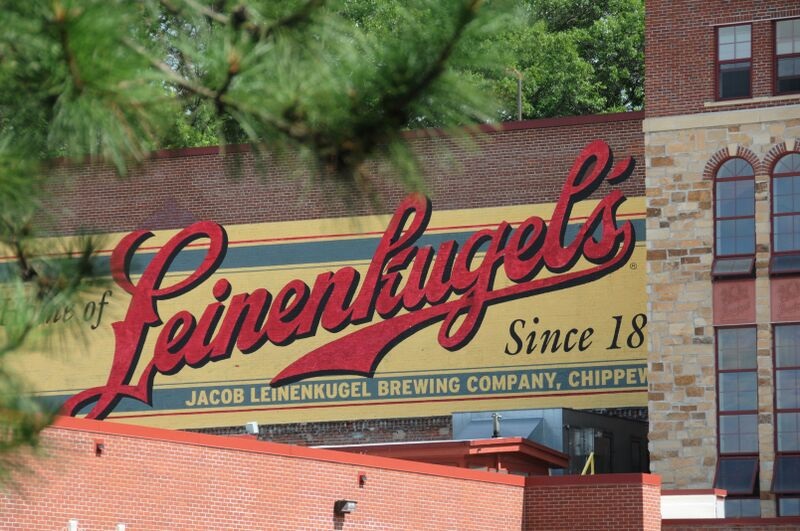
Leinenkugel Brewing Co. first introduced its Summer Shandy in 2007. (Photo courtesy Leinenkugel Brewing Co.)
One of the most recognizable brands of the style is the Leinenkugel’s Summer Shandy–a weiss beer mixed with lemonade, made by the Jacob Leinenkugel Brewing Co., owned by MillerCoors.
It hit the market in 2007 and “to be honest, we weren’t sure if it would work,” says Dick Leinenkugel, the brewery president. The brewery followed up with an Orange Shandy in 2013 and a Cranberry Ginger Shandy in 2014. Harvest Patch Shandy, weiss beer blended with pumpkin spice, will be released this fall. All are 4.2%.
Leinenkugel notes that the shandy appeals to a wide range of drinkers. Echoing this sentiment is Alan Newman, founder of The Traveler Beer Co., which exclusively brews the shandy style of beer. “Wine drinkers who may not normally like beer like shandies because of the sweeter, fruitier notes,” Newman says. “People new to the craft beer scene like shandies because they’re approachable and not so hoppy.”
Traveler Beer Co. is a part of Boston Beer Co. subsidiary Alchemy & Science and offers year-round recipes like Curious Traveler, made with lemon and lime, and Illusive Traveler, made using grapefruit. Its seasonal offerings are made with ingredients like apple, pumpkin, orange, pomegranate and spice. All are 4.4%.
Unlike other shandies, which are made by mixing beer with the juice after fermentation, Traveler beers are produced from start to finish to be shandies and have a wheat ale base. “We add dried lemon in the brewhouse and lemon juice in secondary fermentation,” says brewmaster Jon Carpenter. They “make a whole bevy of very small flavor and juice blends in the brewing lab using Curious Traveler as our base. From there, we pick our favorites to make a few small-batch brews for the team to try.” The beers require high attention to detail and a “low tolerance for any process variation,” Carpenter added.
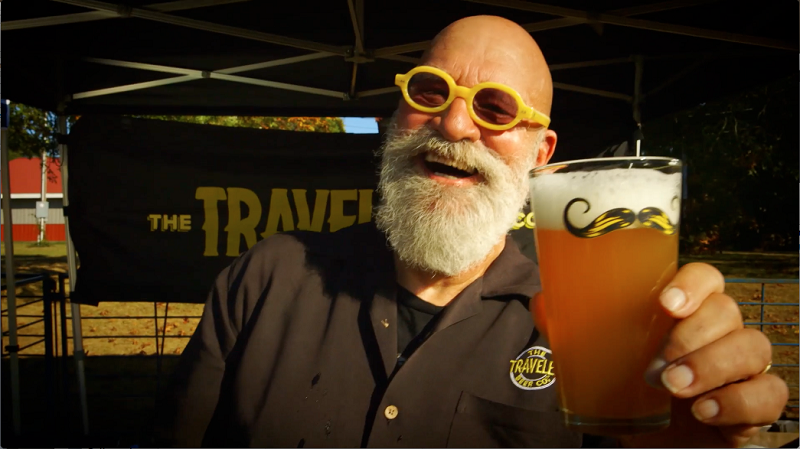
Alan Newman, founder of the Traveler Beer Co. (Photo courtesy Traveler Beer Co.)
Newman discovered the beverage while spending time in Europe in the ’80s and ’90s. His mission when founding Traveler was to educate beer drinkers about these traditional European beverages. “I am a social drinker. I like hanging in bars, talking and drinking beer. While I can appreciate a high-alcohol beer on occasion, I cannot drink many in one sitting,” he says.
Newman isn’t the only one inspired by European consumption of radlers and shandies. Scott Shirley, brewer at Harpoon Brewery’s Windsor, Vermont, brewery, enjoyed the style while traveling in Germany. “Sometimes at noon for lunch after a long night of drinking beers, a radler … gets you back on the horse a little bit.”
Harpoon’s UFO Big Squeeze Shandy, which uses the brewery’s UFO as a base, is 4.5% and is made with about 30 percent grapefruit juice. The juice is added post-fermentation as the beer is on its way to the bright tank, where it will condition and naturally carbonate. To ensure that there’s no post-packaging fermentation, the beer is flash-pasteurized. “It’s basically the same type of process you would use on milk. A multiple-stage heated chamber. We raise the temperature up to 160 degrees for a minute or two, then bring directly back down.
“It’s more of a beer drinking experience rather than a beer tasting experience,” he continues. The grapefruit doesn’t dominate the taste, and it’s complemented by the wheat beer background.
Taking a different route is Rhode Island’s Narragansett Brewing, which uses its flagship lager combined with lemon concentrate for its Del’s Shandy. “The cool thing about our lager is it’s much crisper, cleaner, and the lemon flavor flows through more clearly,” says Mark Hellendrung, president and CEO of Narragansett. A challenge when creating the 5% beer was the lemon flavor profile. The brewers wanted to balance the pulpy, juicy flavor with notes of lemon zest. “It was a challenge. We were working on it for a good six months.” This summer, Narragansett also released a limited-edition Black Cherry Shandy.
No matter the ingredients American brewers are using in their shandies and radlers, it’s clear most are focused on summertime, the outdoors, an enjoyable drinking experience and even community. Portland, Oregon, based Hopworks Urban Brewery instituted “National Radler Day” on June 22, a sort of radler appreciation day, for brewers and fans of the beverage.
“I think it’s about not taking beer too seriously,” says Lee Movic, owner of the website TeamRadler.org, which aggregates tweets that use #TeamRadler. While it’s unlikely that radlers or shandies will change the overall beer landscape, it’s a style worth looking forward to each summer, just like outdoor cookouts, days on the beach and afternoons at the ballpark.
“They’re easy to drink and they’re fun,” says Movic. Just how summer is supposed to be.
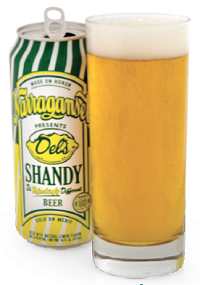
Narragansett Del’s Shandy
ABV: 4.7%Tasting Notes: For adult drinkers of a certain age this beer will transport them back to childhood and that first lemon ice of summer. Bracingly cold, with faint, fresh citrus flavors causing the slightest involuntary pucker. Mouthwatering and a bit thin, it’s best when pulled out of an ice chest filled with near-freezing water and consumed straight from the can.
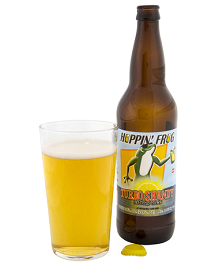
Hoppin’ Frog Turbo Shandy
ABV: 7%Tasting Notes: Pale golden wheat in color, this presents more like a citrus soda—Sun Drop—in that it is a combination of many flavors and also high in sugar. Lime, lemon, tangerine and the slightest hint of peach are all here. The aroma, more like a scented candle than something occurring in nature, is the only slight drawback to this big punch of a shandy.
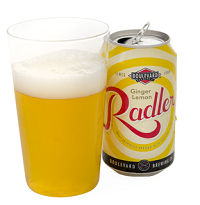
Boulevard Ginger-Lemon Radler
ABV: 4.1%Tasting Notes: This is refreshing and easy-drinking, like a small version of fresh ginger beer, and with a mouthwatering citrus pucker. The ginger is what makes this most interesting, it plays coy with taste buds. Usually very assertive, the flavor here is more like a long and lazy afternoon. Pair with lemongrass chicken skewers on the grill.
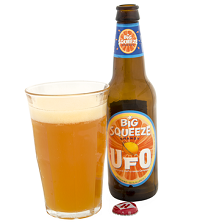
Harpoon UFO Big Squeeze
ABV: 4.5%Tasting Notes: Harpoon wants you to know exactly what you’re getting into, so printed on the label in large type is: Beer + Grapefruit Juice. It certainly is. No missing the pink grapefruit aroma and flavor, but there’s more, like mango and fresh-squeezed lemon. A strong and acidic citrusy bite on the end keeps things interesting. Like the color of a sunset on a hazy, hot day.
Sarah Annese
Sarah Annese is a freelance writer. She blogs at BeerUnion.com and is an author of Beer Lover’s New York.

I had no idea the origin of the Shandy. While I’m not a huge fan because of the sweetness, I can definitely see the appeal.
Great article!